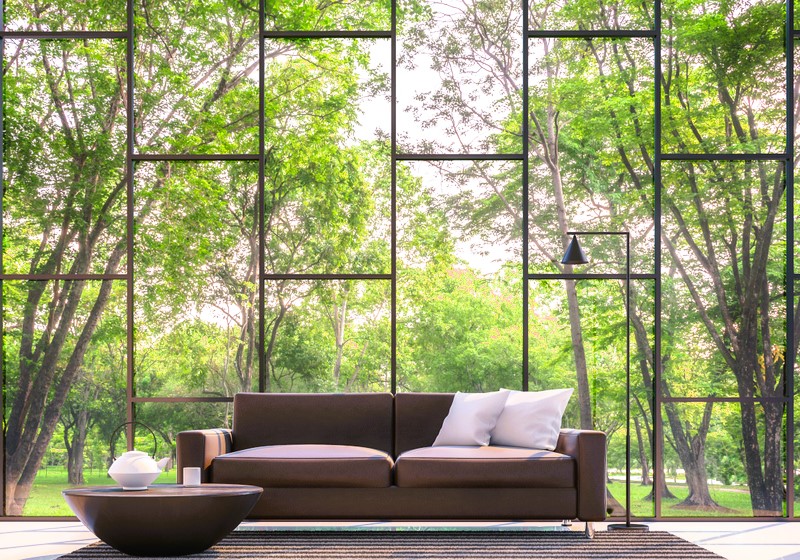As environmental awareness grows, many homeowners are seeking sustainable solutions for their homes. When it comes to windows, there are various eco-friendly options available that not only enhance energy efficiency but also contribute to a greener lifestyle. In this article, we will explore sustainable window options that promote green living and reduce the environmental impact of your home.
Energy-Efficient Windows
Energy-efficient windows are a key component of sustainable window options. These windows are designed to minimize heat transfer, reduce energy consumption, and lower utility bills. There are several features to consider when selecting energy-efficient windows:
a. Double or Triple Glazing: Double or triple glazing refers to windows that have two or three layers of glass with air or gas-filled spaces in between. This configuration enhances insulation and reduces heat loss or gain, resulting in improved energy efficiency.

b. Low-E Coatings: Low-emissivity (low-E) coatings are thin layers applied to the glass surface to reflect heat while allowing light to pass through. Low-E coatings help to reduce energy loss, control solar heat gain, and protect against UV radiation. How to increase the energy efficiency of windows, read more here.
c. Insulated Frames: Window frames made from insulated materials, such as fiberglass, vinyl, or wood with thermal breaks, provide better insulation and minimize energy transfer through the window assembly.
By choosing energy-efficient windows, homeowners can significantly reduce their carbon footprint and enjoy long-term energy savings.
Recycled and Recyclable Materials
Opting for windows made from recycled or recyclable materials is another sustainable choice. Many window manufacturers now offer options that incorporate recycled content, such as recycled aluminum frames or glass made from recycled materials. Choosing windows made from recycled materials reduces the demand for new resources and helps divert waste from landfills.
Additionally, selecting windows that can be easily recycled at the end of their lifespan ensures that they can be repurposed rather than disposed of as waste.
Sustainable Frame Materials
The choice of window frame materials also plays a crucial role in sustainability. Consider the following eco-friendly frame options:
a. Wood Frames: Wood is a renewable resource and an excellent choice for sustainable window frames. Look for windows made from sustainably harvested or FSC-certified (Forest Stewardship Council) wood, which ensures responsible forestry practices.
b. Fiberglass Frames: Fiberglass frames are highly durable and have excellent insulating properties. They are made from a combination of glass fibers and resin, which can be recycled at the end of their lifespan.
c. Vinyl Frames: Vinyl frames are another sustainable option as they are long-lasting, low-maintenance, and energy-efficient. Look for vinyl frames that are free from harmful chemicals such as lead and phthalates.
Choosing window frames made from sustainable materials reduces environmental impact and supports the use of renewable resources.
Passive Solar Design
Passive solar design is a sustainable approach that maximizes the use of natural sunlight and heat to reduce energy consumption. When selecting windows, consider their orientation and placement to optimize solar gain and natural ventilation.
South-facing windows capture the most sunlight during the winter months, providing natural heating benefits. Properly designed overhangs or shading devices can also prevent overheating in the summer by blocking direct sunlight.
By incorporating passive solar design principles, homeowners can rely less on artificial lighting and heating, leading to significant energy savings and a more sustainable home.
Smart Window Technologies

Smart window technologies offer advanced features that enhance energy efficiency and comfort. These technologies include:
a. Electrochromic Windows: Electrochromic windows can change their tint or transparency in response to electric currents. They can dynamically control the amount of heat and light entering a space, reducing the need for artificial lighting and air conditioning.
b. Automated Shading Systems: Automated shading systems can be programmed to adjust the position of shades or blinds based on the time of day or environmental conditions. They help optimize natural light and heat control, improving energy efficiency and comfort.
c. Energy Monitoring and Control Systems: Integrating energy monitoring and control systems with windows allows homeowners to track energy consumption and make informed decisions about energy usage. These systems can be used to automate window operations based on pre-set preferences, further optimizing energy efficiency.
By incorporating smart window technologies, homeowners can take their sustainability efforts to the next level and enjoy enhanced comfort and energy savings.
Conclusion
Choosing sustainable window options is a significant step towards green living and reducing the environmental impact of your home. By selecting energy-efficient windows, using recycled and recyclable materials, opting for sustainable frame materials, considering passive solar design, and embracing smart window technologies, you can create a more eco-friendly and energy-efficient living space.
When considering window replacements or upgrades, consult with professionals who specialize in sustainable window solutions. They can guide you in selecting the most appropriate options for your specific needs, climate conditions, and budget. With sustainable windows, you can enjoy a comfortable and environmentally responsible home for years to come.
